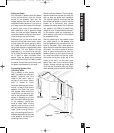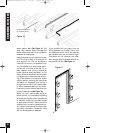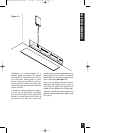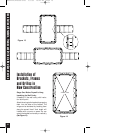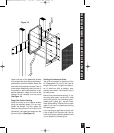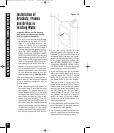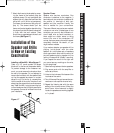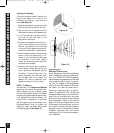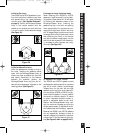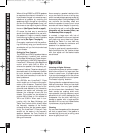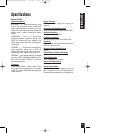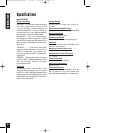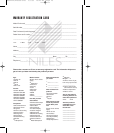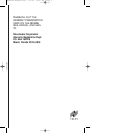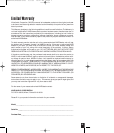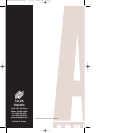
When utilizing AT8500 or AT8700 speakers
to reproduce rear channel information in a
home theater, the goal is to create as many
reflections as possible by mounting the
speakers up high in the wall or in the ceiling
and aim the Midrange/Tweeter Array into
the corners or at an adjoining wall to diffuse
the sound (See Figures 5 and 6 on page 8).
Of course, the best way to emulate the
sound of multiple speakers is to use multi-
ple speakers. In large or unusually shaped
rooms this may be the only way to achieve
good results (See Figure 7 on page 9).
Once again, experiment with the position-
ing of the Array using your favorite movie
soundtracks until you find what works best
in your theater.
Setting the Tone Controls
The AT8500 and AT8700 speakers feature
baffle-mounted, 4 position level controls
for the Bass, Midrange and Treble frequen-
cies. Additionally, the AT8700 features two
LinearTrack™ filters and a Sub-Bass Boost
control which adds 3dB at 60Hz to
enhance the speaker’s low frequency per-
formance if desired. These tone shaping fil-
ters enable each of the frequency bands to
be cut or boosted to compensate for less
than ideal room acoustics, or to suit the lis-
tener’s preference.
The AT8700’s two LinearTrack™ Filters
which enable you to fine tune the perfor-
mance of the crossover. These two filters
each adjust an octave wide band of fre-
quencies most affected by the interaction
between the woofer and midrange, and
between the midrange drivers and the
tweeter. The controls can be adjusted to
provide 2dB of Boost or Cut centered at
1KHz and 3.5KHz. When used in con-
junction with the Bass, Midrange, and
Treble Tone Controls (which directly affect
the frequency response of the woofer,
midrange drivers, and the tweeter respec-
tively), the LinearTrack™ Filters will help
smooth out the seams in the frequency
spectrum between the Tone Controls to
optimize performance in less than ideal lis-
tening environments.
As an example, a speaker installed within
one or two feet of a corner or ceiling may
exhibit excessive bass response caused by
the boundary effect. Cutting the Bass by 3 dB
can minimize the boundary effect and
enable the speaker to sound much more
accurate and natural despite it’s proximity
to the adjoining wall or ceiling (For more
information on the boundary effect, see
The Boundary Effect on page 6).
In contrast, a large room with lots of
drapes, upholstered furniture and textured
wall paper may sound dead and lifeless.
Boosting the Treble 2 or even 4dB may
substantially increase the ambience and
presence in an absorbent room.
The key to good sound is experimentation.
Set the controls to the “flat” position to start
with, then adjust until the desired results
are achieved.
Operation
Listening at Higher Volumes
It requires more power to achieve a reason-
able volume of sound in a large room than
it does in a small room. It is possible (even
if you are not a teenager) to turn the volume
so high that the amplifier runs out of power.
This creates “clipping” distortion.
Clipping distortion makes treble sound very
harsh and unmusical. When you hear harsh
sounding treble from any good speaker,
turn the volume down immediately! Those
harsh sounds are masking some much
more powerful ultra-high-frequency sound
spikes which will quickly damage any fine
loudspeaker. You are much less likely to
damage a speaker with a large amplifier
because it will be very loud indeed before
it produces any clipping distortion.
Cleaning
You can clean the speaker with a dampened
soft cloth or paper towel. If the speaker is
mounted high up on a wall or ceiling, use a
broom to gently brush it off.
Installation of the Speaker and Grille in New or Existing Construction
20
DS00222A/AT8500-8700 3/1/99 10:48 AM Page 22



